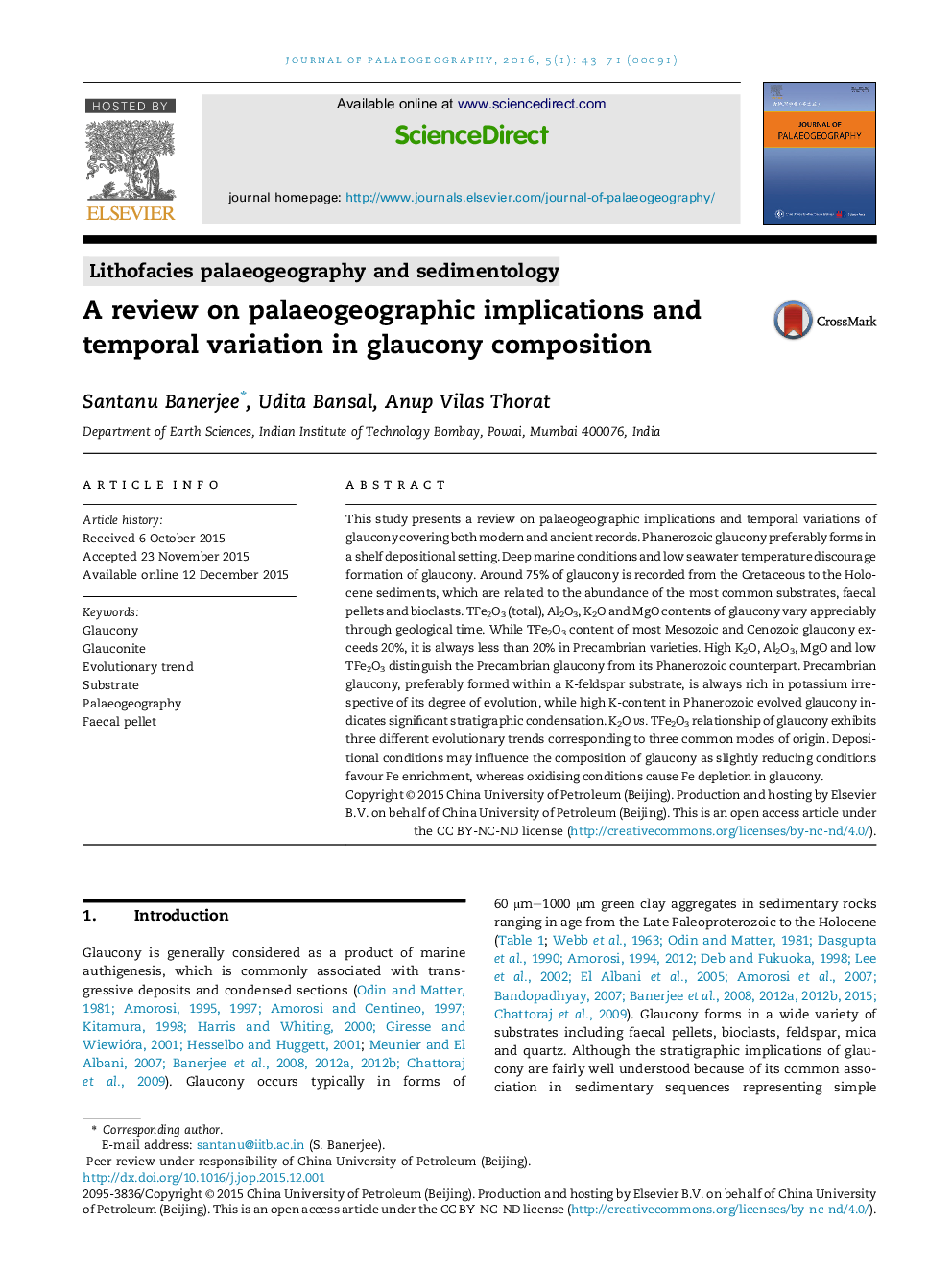| کد مقاله | کد نشریه | سال انتشار | مقاله انگلیسی | نسخه تمام متن |
|---|---|---|---|---|
| 4580954 | 1333667 | 2016 | 29 صفحه PDF | دانلود رایگان |

This study presents a review on palaeogeographic implications and temporal variations of glaucony covering both modern and ancient records. Phanerozoic glaucony preferably forms in a shelf depositional setting. Deep marine conditions and low seawater temperature discourage formation of glaucony. Around 75% of glaucony is recorded from the Cretaceous to the Holocene sediments, which are related to the abundance of the most common substrates, faecal pellets and bioclasts. TFe2O3 (total), Al2O3, K2O and MgO contents of glaucony vary appreciably through geological time. While TFe2O3 content of most Mesozoic and Cenozoic glaucony exceeds 20%, it is always less than 20% in Precambrian varieties. High K2O, Al2O3, MgO and low TFe2O3 distinguish the Precambrian glaucony from its Phanerozoic counterpart. Precambrian glaucony, preferably formed within a K-feldspar substrate, is always rich in potassium irrespective of its degree of evolution, while high K-content in Phanerozoic evolved glaucony indicates significant stratigraphic condensation. K2O vs. TFe2O3 relationship of glaucony exhibits three different evolutionary trends corresponding to three common modes of origin. Depositional conditions may influence the composition of glaucony as slightly reducing conditions favour Fe enrichment, whereas oxidising conditions cause Fe depletion in glaucony.
Journal: Journal of Palaeogeography - Volume 5, Issue 1, January 2016, Pages 43–71